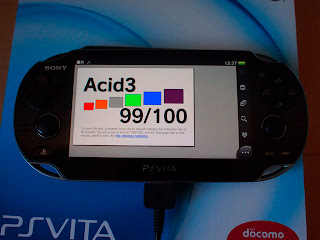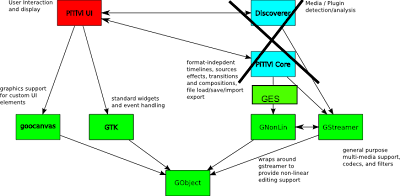jeff_rigby
Banned
Accelerate HTML5 Games 10X With the appMobi directCanvas SDK
native code added to platforms (NaCl) or taking advantage of webkit 2 to create a "direct canvas" that is faster with a tighter smaller loop, some javascript calls bypassed or all javascript calls totally eliminated....drop out of javascript and use OpenGL to directly write to the screen?
We now have two "Console quality" game and application schemes targeted at Android (PS suite and Mobi Direct Canvas) with Google Chrome NaCl targeting PC games. Mobi Direct Canvas could work on all platforms handheld, game console and PC that have a HTML5? WebGL? webkit2? browser. Targeted platforms Android and iOS have or soon will have, in the case of Android, a HTML5, WebGL, Webkit 2 browser.
I find it interesting that ALL three (PS Suite, Chrome NaCl, Mobi direct canvas) released within 30 days of each other 6 months after Apple released webkit2, 3 months after Chrome became webkit 2 and 2 month after Google announced an Android browser rewrite to support a webkit compliant API webkit2 browser.
Anyone have more information on this?
Edit:
PDF explaining direct Canvas "Mobi-Direct Canvas is a javascript execution environment that includes a minimal DOM, primarily to provide access to a partial implementation of a HTML5 canvas that is optimized for iOS. In order to use Mobi-direct canvas your app must be split into two components that will run in the two execution contexts which each have their own view. The appMobi component runs in the top view and should provide the portion of the UI the user interacts with. The direct canvas component runs in it's own view that is beneath the Mobi-app view - it does not receive touch events or UI interaction directly."
OK less threat to PS Suite, webkit 2 required and more probable this becoming a Khronos standard. Works for HTML5 canvas on all platforms? Part technique part minor rewrite to webkit/HTML5 canvas?
Read 20 articles on this and my impression I can't confirm, this is going to become a standard accepted by Khronos. It sounds like NaCl but more tightly tied into javascript with APIs released by Mobi called Direct Canvas to create a standard. It could beThe HTML5 development company appMobi announced the release of its directCanvas acceleration technology as an open source software development kit (SDK), as well as new performance statistics detailing the effectiveness of accelerating HTML5 games with directCanvas. The technology is available now for iOS apps and will be released for Android in the first quarter of next year.
DirectCanvas was made open source last month along with a slate of other appMobi technologies, and this SDK fully integrates directCanvas into HTML5 game development. HTML5 games have long been criticized for poor performance speeds when rendering graphics and playing audio, and appMobi’s overarching goal is to bridge the gap between traditional native applications and apps built with open web technologies (HTML5, JavaScript, CSS3) that run in a device’s browser.
In a press release making the announcement, appMobi quoted Henrik Dalgaard, CEO of Tweensoft, an HTML5 game development company:
“We’ve switched all of our iOS games over to use appMobi’s technologies. directCanvas really does allow HTML5 games to perform like native games, even on older devices. The other advantage to us is that with HTML5 and appMobi, we can use the same code and build for iOS, Android and for the open mobile Web.”
We now have two "Console quality" game and application schemes targeted at Android (PS suite and Mobi Direct Canvas) with Google Chrome NaCl targeting PC games. Mobi Direct Canvas could work on all platforms handheld, game console and PC that have a HTML5? WebGL? webkit2? browser. Targeted platforms Android and iOS have or soon will have, in the case of Android, a HTML5, WebGL, Webkit 2 browser.
I find it interesting that ALL three (PS Suite, Chrome NaCl, Mobi direct canvas) released within 30 days of each other 6 months after Apple released webkit2, 3 months after Chrome became webkit 2 and 2 month after Google announced an Android browser rewrite to support a webkit compliant API webkit2 browser.
Anyone have more information on this?
Edit:
PDF explaining direct Canvas "Mobi-Direct Canvas is a javascript execution environment that includes a minimal DOM, primarily to provide access to a partial implementation of a HTML5 canvas that is optimized for iOS. In order to use Mobi-direct canvas your app must be split into two components that will run in the two execution contexts which each have their own view. The appMobi component runs in the top view and should provide the portion of the UI the user interacts with. The direct canvas component runs in it's own view that is beneath the Mobi-app view - it does not receive touch events or UI interaction directly."
OK less threat to PS Suite, webkit 2 required and more probable this becoming a Khronos standard. Works for HTML5 canvas on all platforms? Part technique part minor rewrite to webkit/HTML5 canvas?














